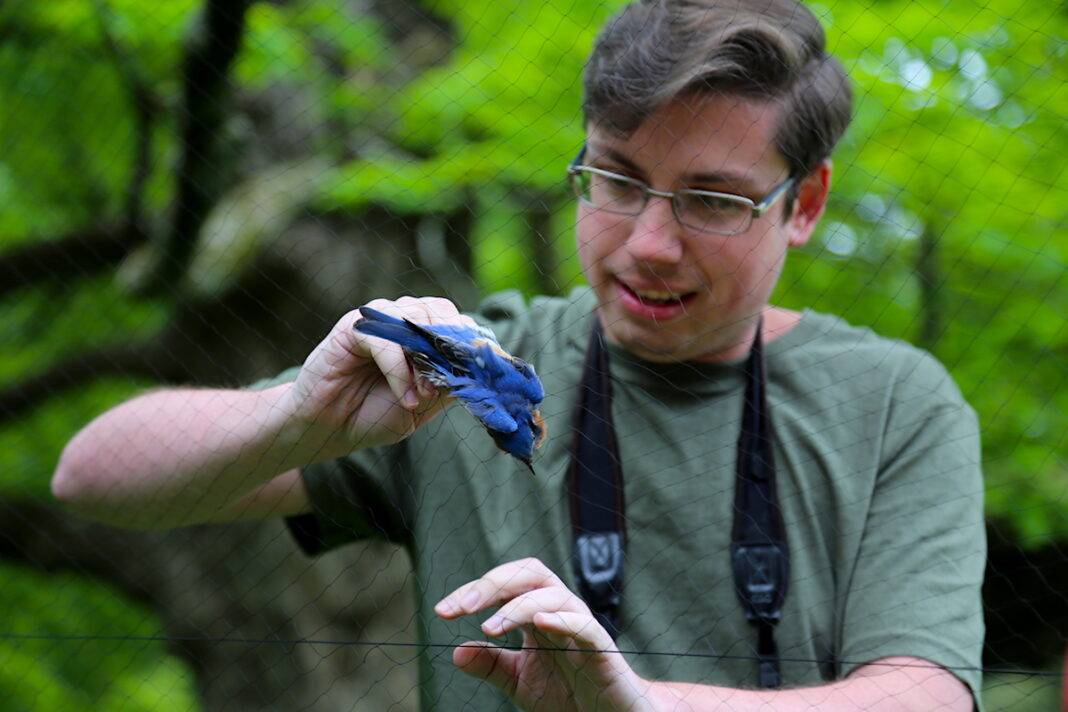Bluedot Living’s resident bird enthusiast, Alison L. Mead, shares scenes from a misty morning bird banding demonstration led by Connecticut Audubon Society’s Pomfret Center Sanctuary Manager, Andy Rzeznikiewicz, and dedicated volunteers.
For more than a hundred years scientists have used bird banding to gather data about the health, behavior, and migration patterns of birds, along with notable changes in the ecosystems in which they live.
Birds are captured in “mist nets,” barely visible fine nets strung between trees. Once a bander (often a volunteer trained to help) has caught a bird and gently removed it from the net, they place it in a cloth bag to keep it calm and secure. Then the data gathering begins. Birds are identified by species and sex, then measured and weighed. Age, wingspan and any other notable observations — such as wing or bill injuries — are also documented. Then the bander places a metal band or colored marker engraved with 9 unique numbers, issued by the USGS Bird Banding Laboratory on the bird’s leg, and secures it with pliers. Then the bird is ready for release. The process takes less than ten minutes.
When a banded bird is found or re-captured, the unique band number is entered into a national database to find out more about where the bird was originally banded, its history and an update is entered. Birds may also be sampled for disease or toxicology, especially if the bird is deceased.
At the end of the demonstration I attended, the tally was just 7 birds: Scarlet Tanager, Pine Warbler, Tufted Titmouse, House Finch, Eastern Bluebird, Mourning Dove, and Grey Catbird.
“We want to catch as many as we can each season,” Andy Rzeznikiewicz said. “Last year we had so many birds we were catching at the same time, we were loaded with them.” This year, Andy said that they were seeing about fifty percent fewer birds than last year. A participant added that it has been taking up to three days for his bird feeders to be emptied — in contrast to years past. Andy had noticed the same trend and had not yet determined why.
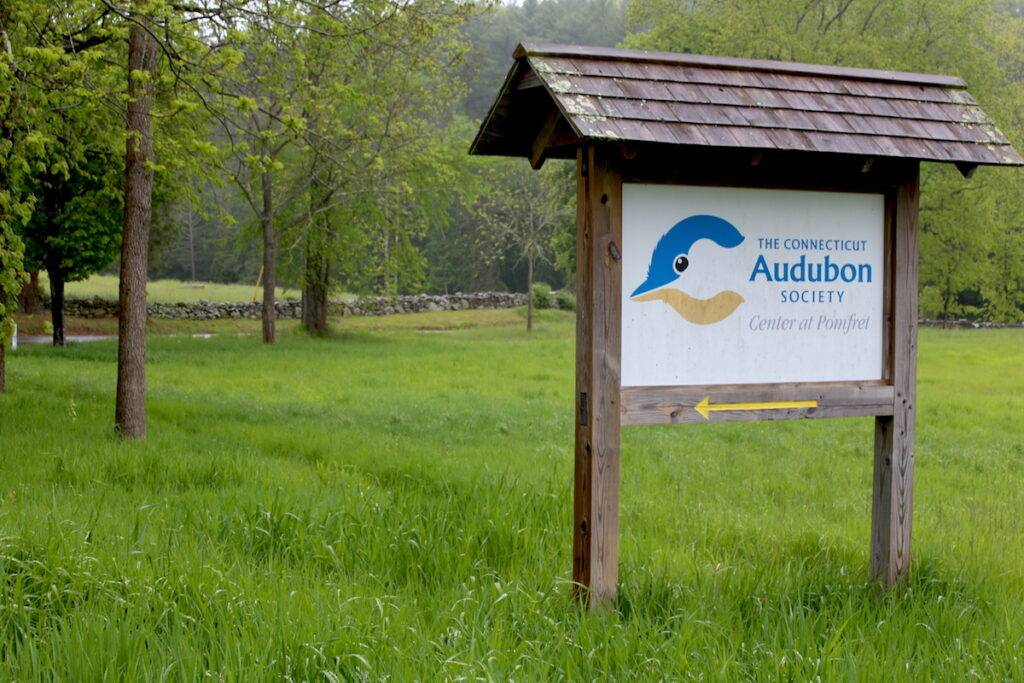
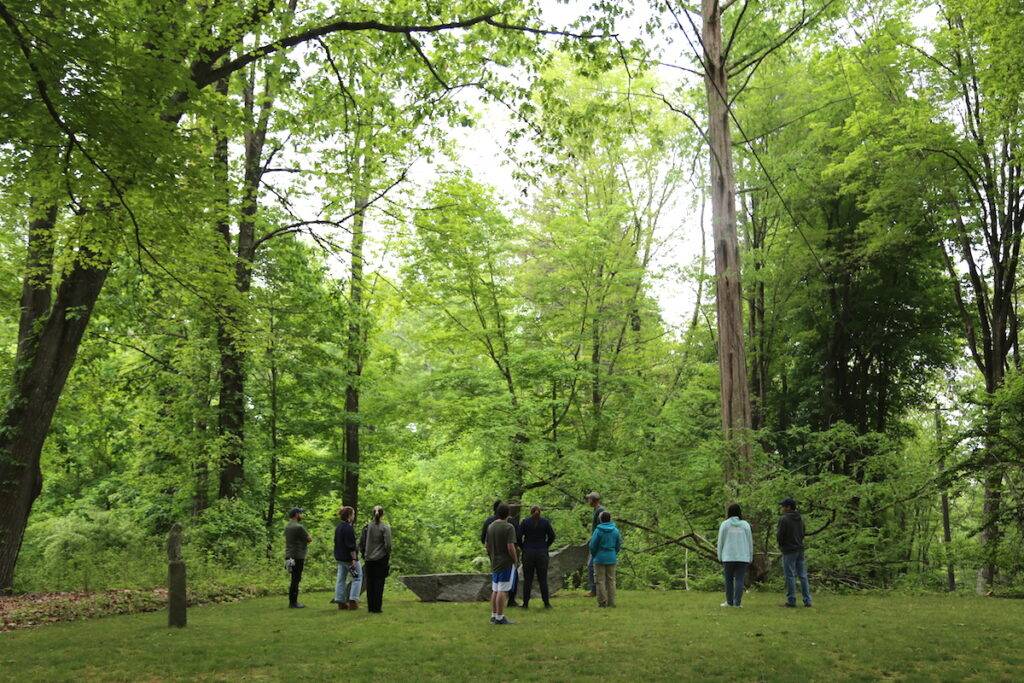

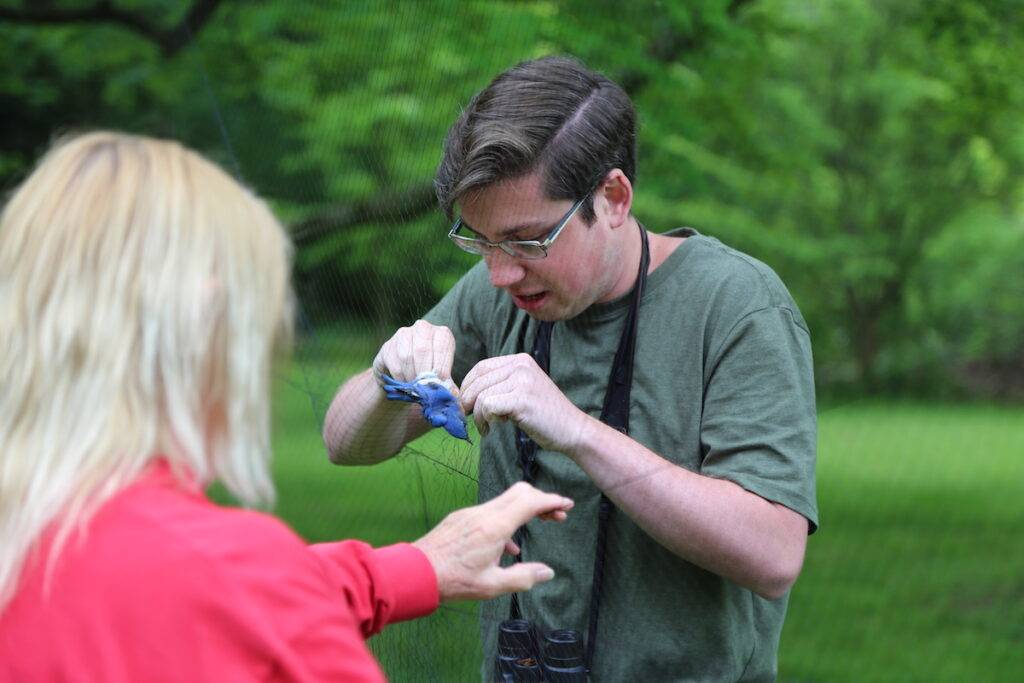
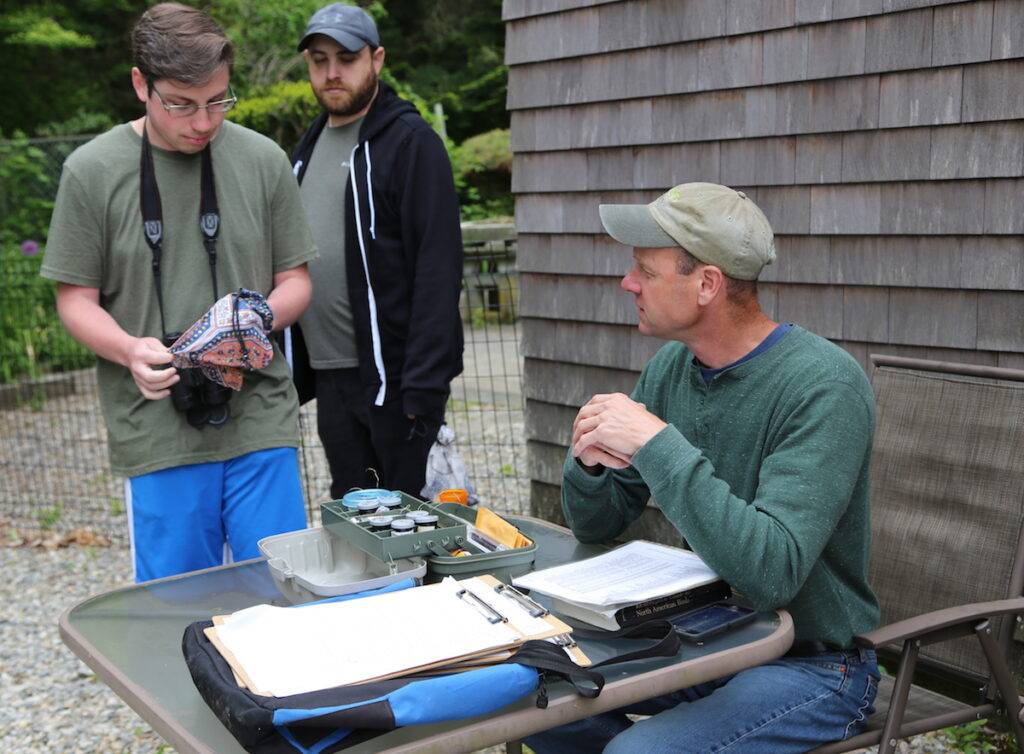
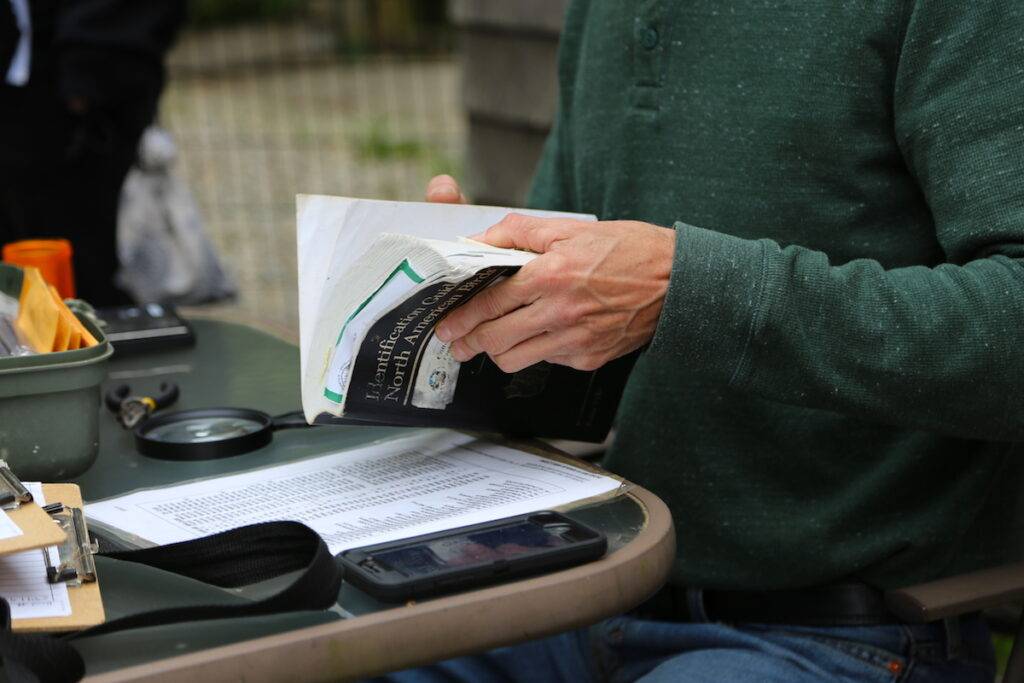
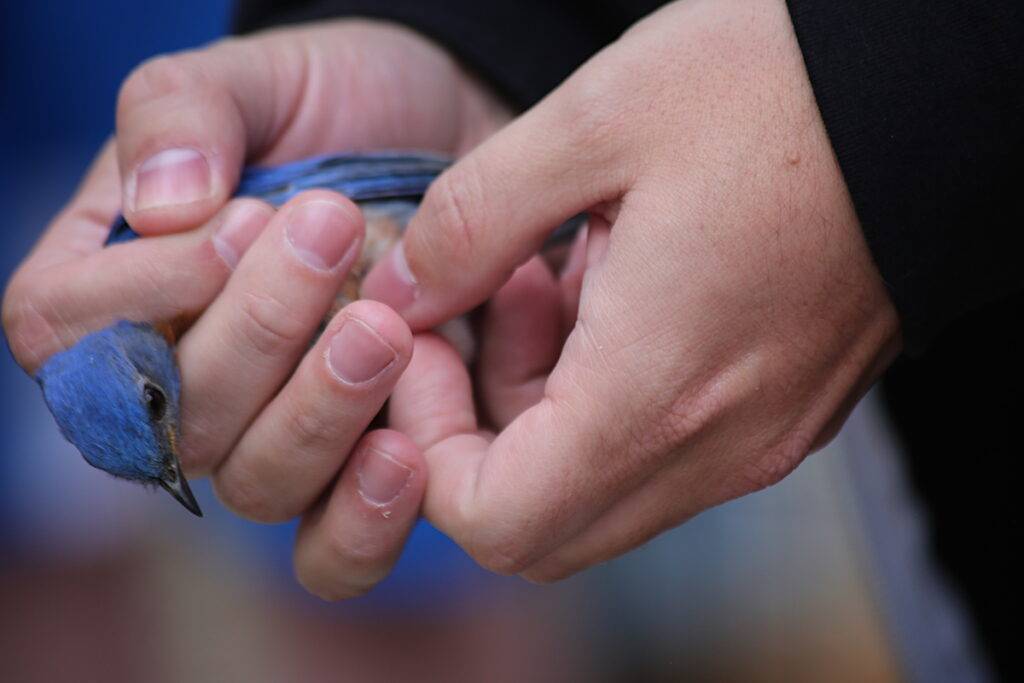
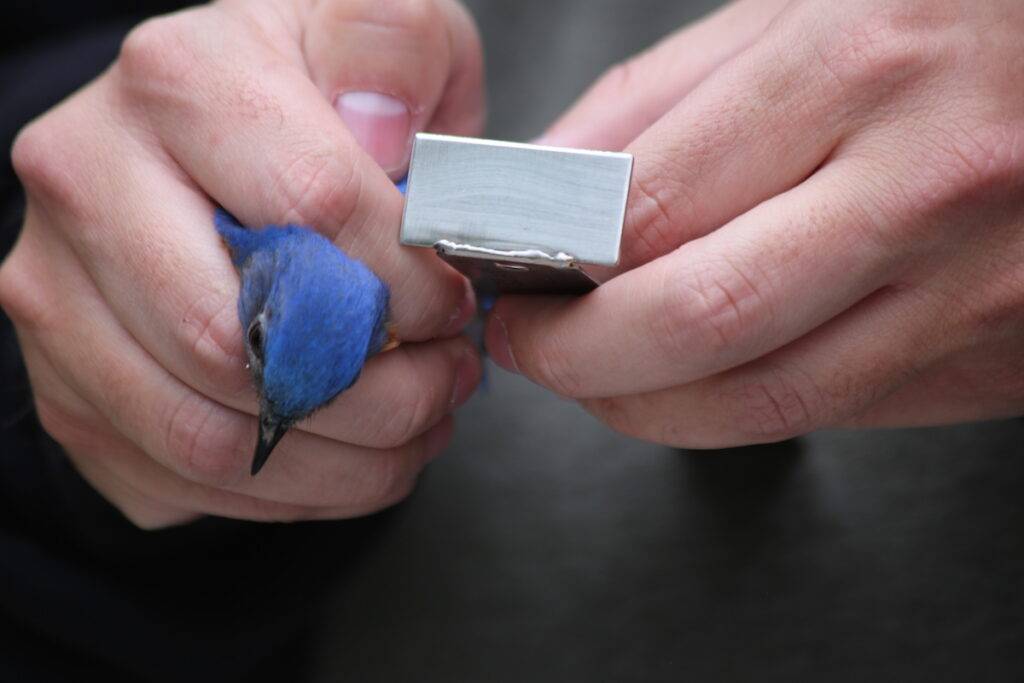
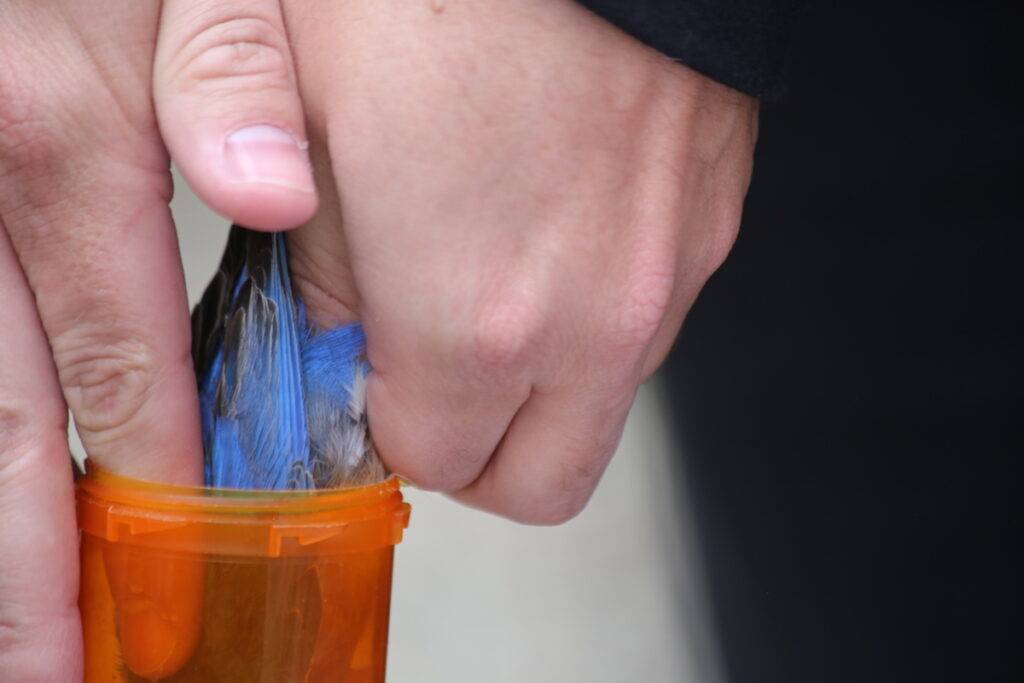


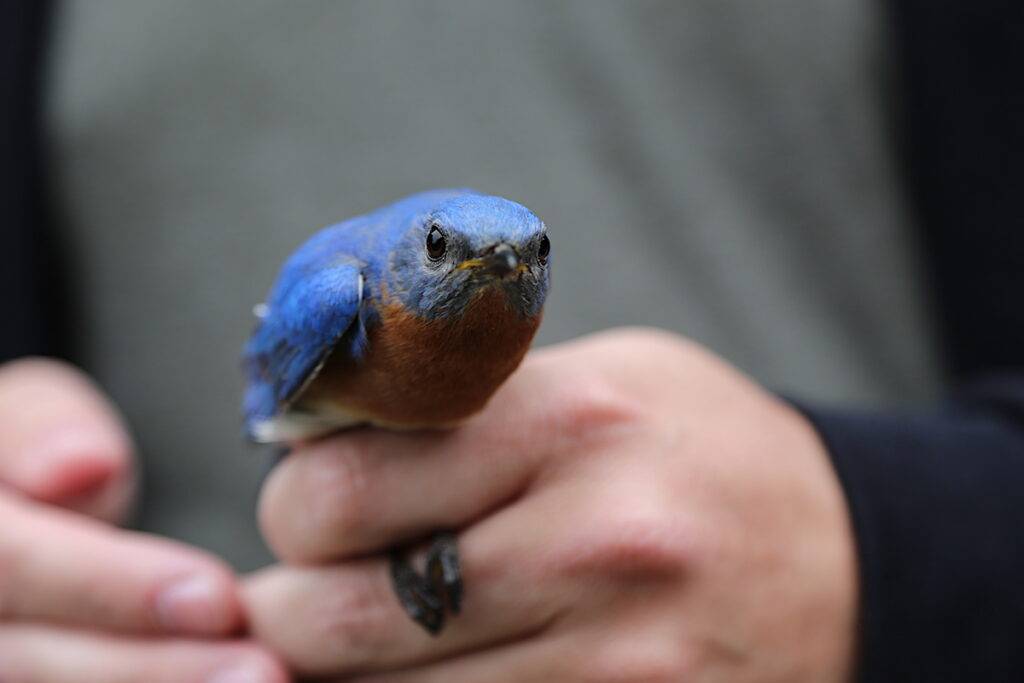
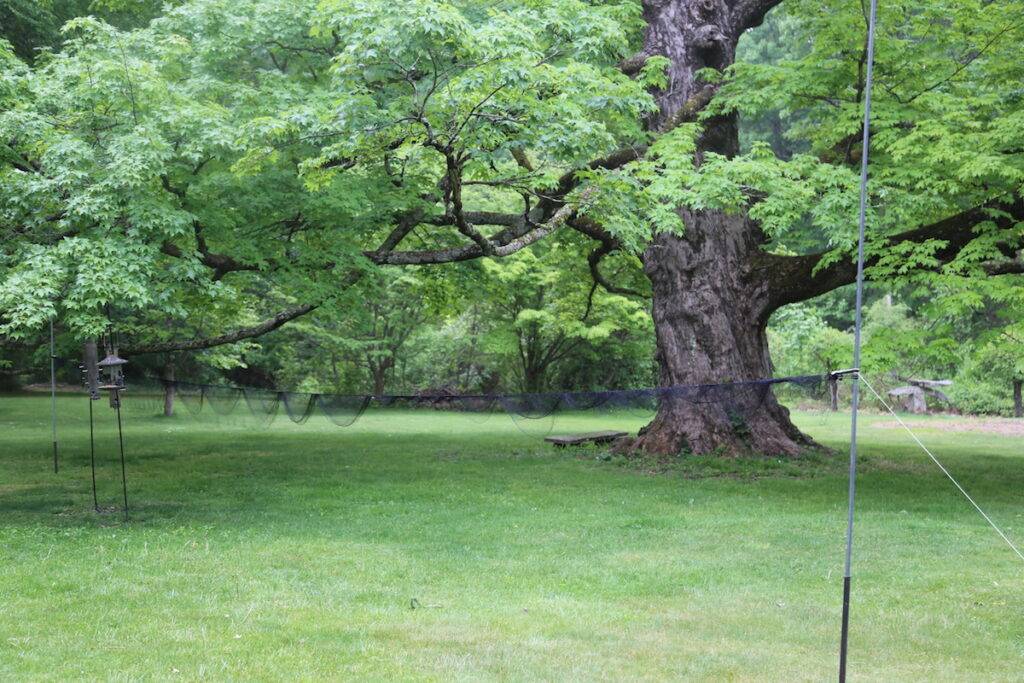
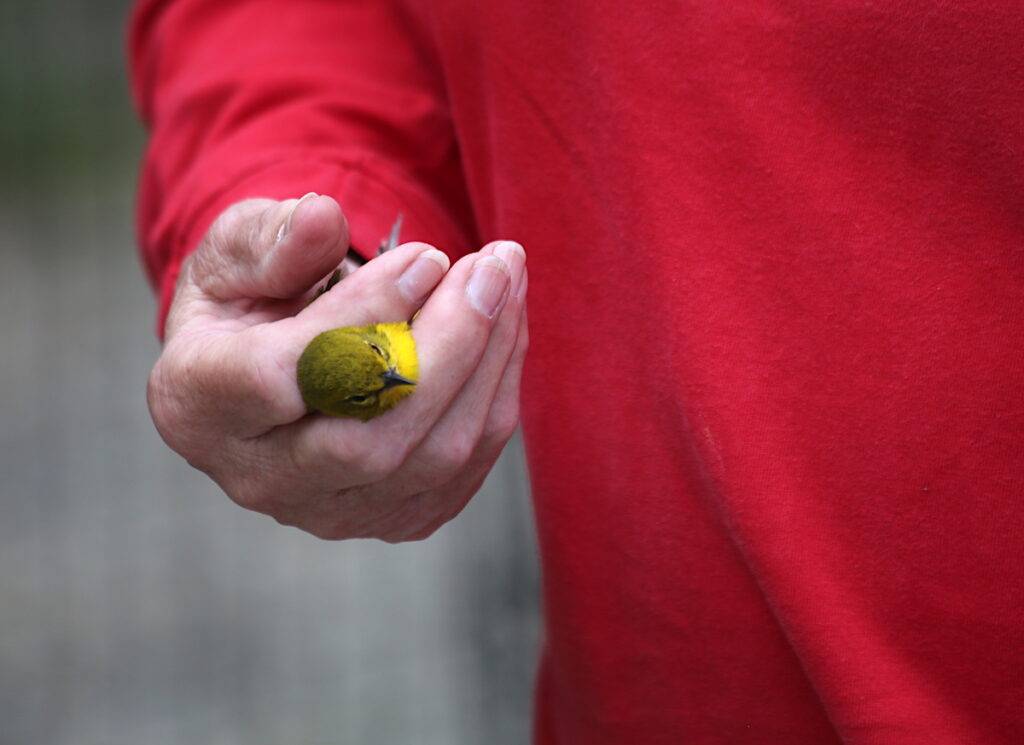
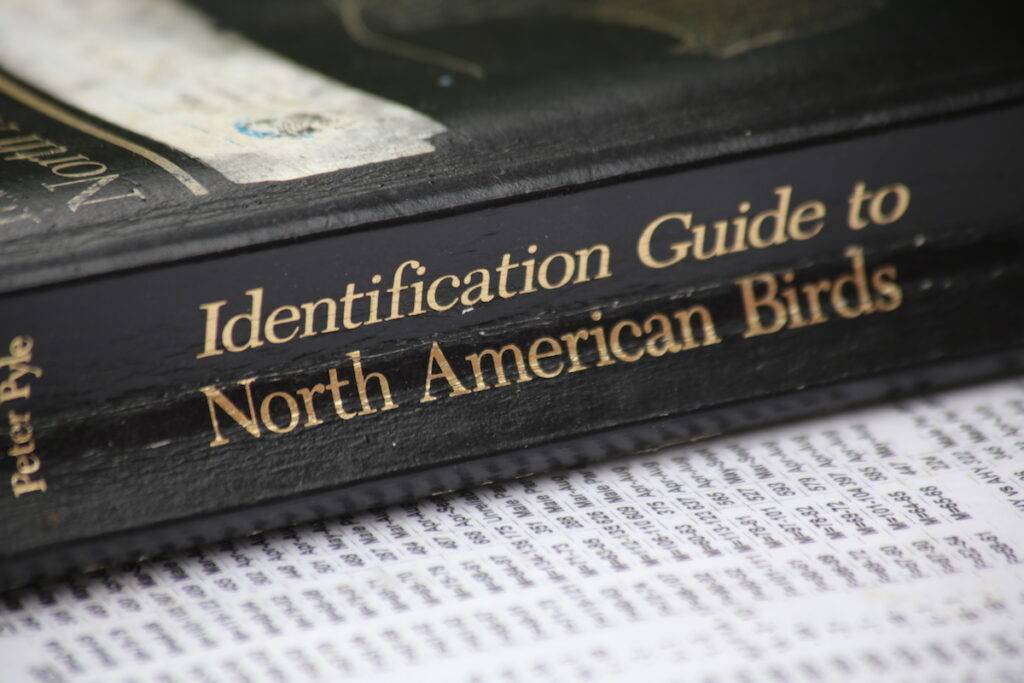

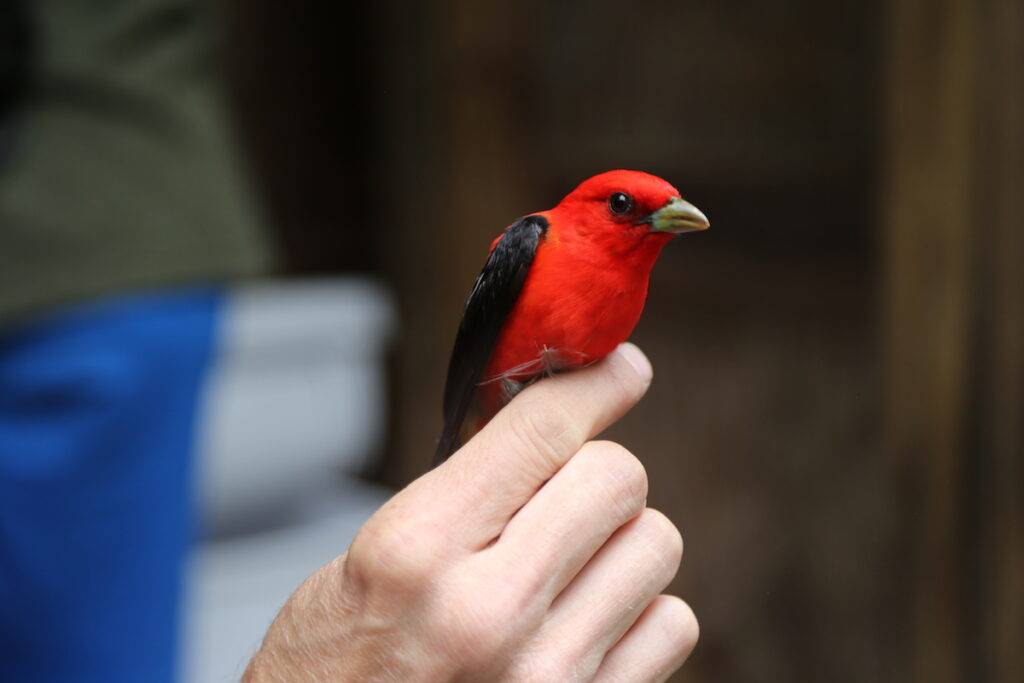
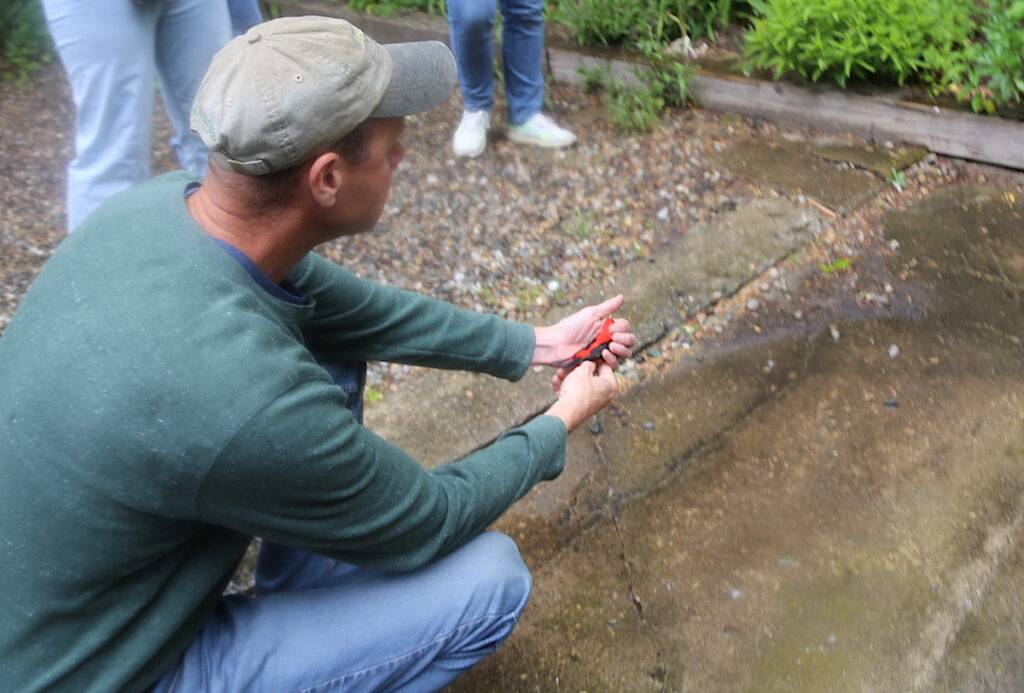
Interested in getting learning more about bird conservation?
Many Audubon Society chapters across the United States offer bird banding demonstrations (and more) to the public to learn more about their work, birds and birding. Volunteer opportunities are also posted on local chapter sites.
To report a banded bird, visit reportband.gov.


